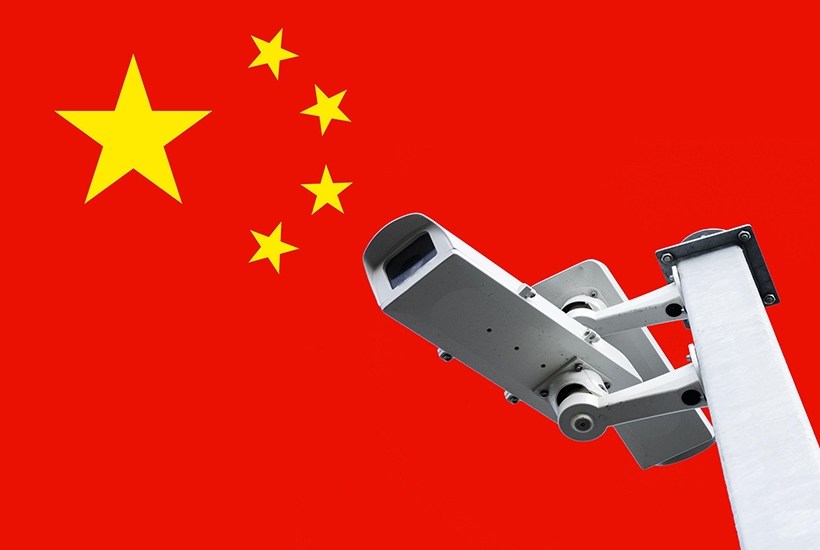In January, the United States declared that China’s brutal treatment of the Uighur people in Xinjiang amounted to genocide. ‘I believe this genocide is ongoing, and we are witnessing the systematic attempt to destroy the Uighurs by the Chinese party-state,’ said Mike Pompeo, the former US secretary of state. British MPs made a similar declaration in April. Beijing fervently denies the accusation, and some experts maintain that ‘cultural genocide’ is a more appropriate label. But whatever we call it, the systematic attempt to erase Uighur identity, culture and history is a heinous crime against humanity.
In The Perfect Police State the American journalist Geoffrey Cain shows how Xinjiang, China’s remote northwest region, became ‘the world’s most sophisticated surveillance dystopia’. He traces the authorities’ development of new technologies to monitor and control Muslim and other ethnic minority citizens whose religion and culture make them politically suspect. And he takes us through the iron gates of Xinjiang’s ‘re-education centres’ — actually mass internment facilities, which he bluntly calls concentration camps, — where prisoners are ritually humiliated and brainwashed.
The horrors of China’s policy of forced assimilation in Xinjiang have been well documented before by a few brave foreign correspondents and researchers. Cain relies heavily on their work, but he has some fresh stories to tell from his own interviews with Uighur refugees. One of them is Maysem, a young graduate student in Turkey who is sent to a re-education camp after returning home to Xinjiang for the summer vacation. There she is forced to chant slogans praising the Communist party and write paeans to China’s supreme leader Xi Jinping: ‘You are the sun, you are the moon, you are the mountains!’ Even Kim Jong-un would be impressed.
Yet the real value of Cain’s book is its tying together of the different threads of reportage on ‘the Situation’ in Xinjiang — as it is euphemistically called on the ground. He is especially good at explaining how this vast, sparsely populated desert region became a laboratory for China’s emerging techno-authoritarianism.
The building blocks were laid in 2009, after vicious ethnic riots in the region’s capital killed 197 people. China’s fledgling tech firms began to build a surveillance network of internet-connected cameras, superseding the old CCTV system. They employed algorithms to recognise faces, matching them with the national citizens’ database. Next, the authorities passed on metadata from China’s ubiquitous QQ and WeChat messaging services. The tech firms used this to build a ‘deep neural network’ that could make links between millions of images and data points.
By 2015, as the artificial intelligence software learned to pick up patterns in speech and human interactions, Xinjiang began to experiment with ‘predictive policing’. The following year a hardline new party chief deployed the surveillance technology to detain suspects before they committed a crime — including Uighurs suspected of being infected with ‘ideological viruses’. By the end of 2017, an estimated 1.5 million of Xinjiang’s 11 million Uighurs had been sent to re-education camps.
Cain likens the surveillance system to a high-tech version of the panopticon, the circular prison designed by the 18th-century English philosopher Jeremy Bentham. The shape enables a guard to observe every inmate from the prison’s centre without being seen himself. It is an effective tool of control because nobody knows when they are being watched. The difference in Xinjiang is that, thanks to sophisticated technology, everybody really is being watched most of the time.
The book skewers the moral complacency of the US tech companies which helped Xinjiang build its panopticon. Vital breakthroughs in neural networks came at Microsoft’s lab in Beijing, which has trained more than 5,000 AI researchers. Chinese surveillance firms relied on Intel and Nvidia to supply microchips. SenseTime, a leader in facial recognition, received backing from Qualcomm. Thermo Fisher Scientific sold DNA sampling equipment to the Xinjiang government.
This is absorbing stuff — but the book needs to come with a content warning. Cain is an Asia-based reporter, but haslittle China experience, and it shows. ‘Can we take this seriously?’ I scribbled in the margin after a string of clangers. Cain makes Xinjiang sound like a nightmare version of his native American Midwest. Uighurs are harassed by the cops for driving ‘to the grocery store to grab something for dinner’ or are picked up for buying ‘a six-pack of beer’. Perhaps they’re stopped on their way back from the local taco joint too?
Whenever Cain strays into wider China issues the analysis is always a bit off. We are told that China ‘completed its project of national revival’ in 2020, when the actual target date is 2049. He is also reluctant to delve into some thorny questions. Is Beijing actually committing genocide in Xinjiang? He doesn’t say. Instead, he ends with an impassioned plea to ‘stop the panopticon’ from spreading across the world. But, given that China has already exported its ‘Safe City’ surveillance technology to well over 50 countries, I fear that’s easier said than done.
Got something to add? Join the discussion and comment below.
Get 10 issues for just $10
Subscribe to The Spectator Australia today for the next 10 magazine issues, plus full online access, for just $10.
You might disagree with half of it, but you’ll enjoy reading all of it. Try your first month for free, then just $2 a week for the remainder of your first year.














Comments
Don't miss out
Join the conversation with other Spectator Australia readers. Subscribe to leave a comment.
SUBSCRIBEAlready a subscriber? Log in